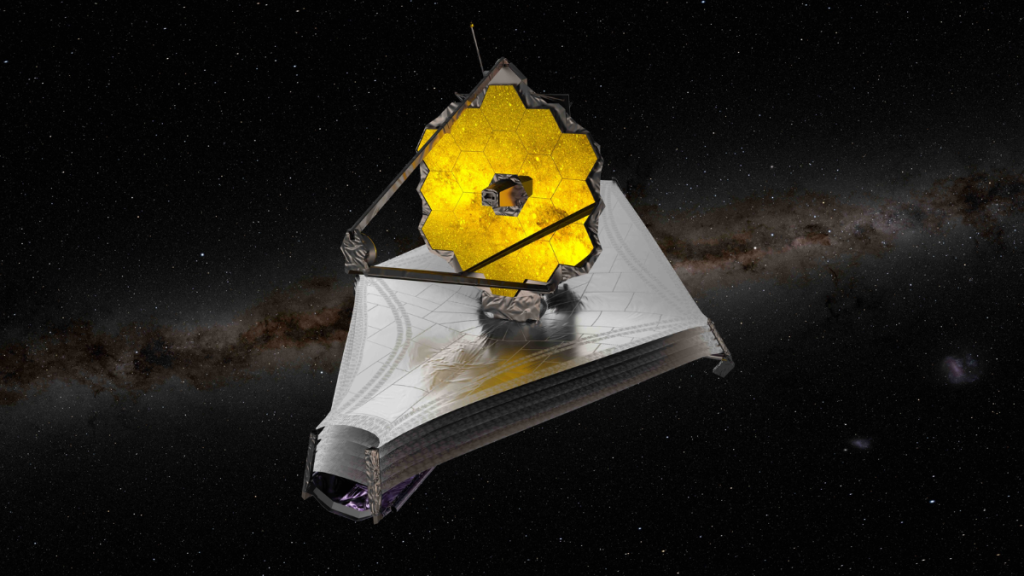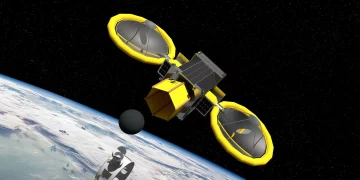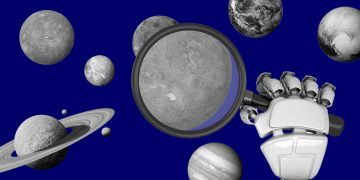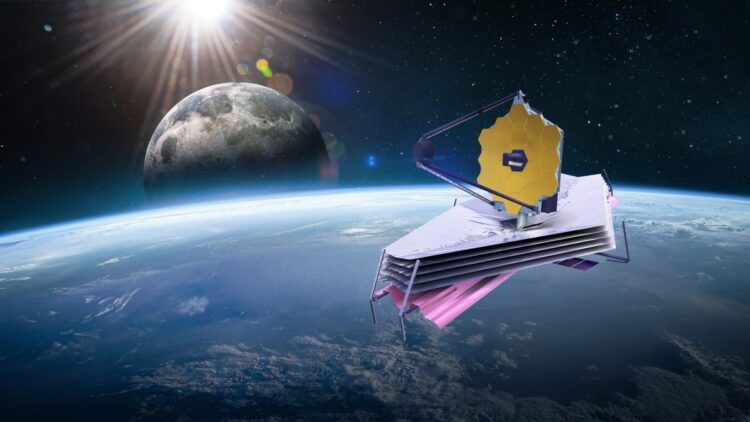The James Webb Space Telescope (JWST) has revolutionized our understanding of the cosmos since its launch. Positioned as the successor to the Hubble Space Telescope, JWST has far-reaching capabilities that enable it to explore distant galaxies, uncover the secrets of exoplanets, and trace the origins of stars and galaxies. This article delves into the capabilities of JWST, its discoveries so far, and its future potential in unraveling the mysteries of the universe.
1. A New Era in Space Observation
Launched on December 25, 2021, the James Webb Space Telescope was designed to observe the universe in the infrared spectrum, a capability that offers several advantages over optical telescopes like Hubble. While Hubble’s observations were primarily in the visible and ultraviolet parts of the spectrum, JWST’s infrared capabilities allow it to peer deeper into space and see through cosmic dust clouds that would otherwise obscure distant objects.
JWST was a collaboration between NASA, the European Space Agency (ESA), and the Canadian Space Agency (CSA). It was placed in a unique orbit around the second Lagrange point (L2), approximately 1.5 million kilometers from Earth. This position allows the telescope to stay in a stable environment, far away from the interference of Earth’s atmosphere and thermal radiation.
2. The Capabilities of JWST
JWST’s design features advanced instruments that allow it to investigate a wide range of astronomical phenomena. Below are some of its key capabilities:
1. Infrared Observation
JWST’s most powerful feature is its ability to observe the universe in infrared wavelengths. This enables the telescope to detect objects that are too faint, far, or distant to be observed in visible light. By using infrared technology, JWST can study:
- Distant galaxies: The telescope can observe galaxies that formed during the early stages of the universe, more than 13 billion years ago. Light from these galaxies has stretched into the infrared as the universe expanded, making JWST the ideal instrument for studying their properties.
- Exoplanets: JWST can analyze the atmosphere of exoplanets, looking for signs of water, carbon dioxide, and even possible biosignatures. This helps scientists learn more about the potential for life beyond our solar system.
- Star formation: The infrared capabilities of JWST allow it to study regions of space where new stars are born, often hidden by dense clouds of gas and dust. This gives astronomers a better understanding of the processes involved in star formation.
2. Unprecedented Resolution and Sensitivity
JWST’s primary mirror is 6.5 meters in diameter, nearly three times larger than Hubble’s 2.4-meter mirror. This larger mirror allows the telescope to capture more light, resulting in significantly higher resolution and sensitivity. JWST can observe objects in the universe with unparalleled detail, even at incredibly distant distances, giving scientists a clearer view of some of the universe’s oldest and most mysterious objects.
3. Advanced Instruments for Exploration
JWST is equipped with four powerful scientific instruments:
- Near Infrared Camera (NIRCam): NIRCam is responsible for imaging and spectroscopic observations in the near-infrared spectrum. It is instrumental in observing the formation of stars and galaxies and detecting distant objects.
- Near Infrared Spectrograph (NIRSpec): This instrument provides spectral data that help astronomers analyze the chemical composition, temperature, and velocity of objects in space, such as exoplanets and distant galaxies.
- Mid-Infrared Instrument (MIRI): MIRI can observe the universe in the mid-infrared spectrum, which is critical for studying older galaxies, the formation of planetary systems, and the detection of dust in space. It can also peer into the atmospheres of exoplanets.
- Fine Guidance Sensor/Near InfraRed Imager and Slitless Spectrograph (FGS/NIRISS): This component ensures that the telescope stays precisely on target by providing stability during observations. It also assists in detailed studies of exoplanets.
4. The Sunshield: Protecting the Instruments
To ensure the instruments operate at optimal temperatures, JWST features a large, five-layer sunshield the size of a tennis court. This shield protects the telescope from the heat and light of the Sun, keeping it cool enough to detect faint infrared signals. By blocking out sunlight, the sunshield allows JWST to maintain the extremely cold temperatures necessary for infrared observation.

3. Discoveries and Milestones
Since its deployment, JWST has begun to make groundbreaking discoveries. Here are some of the telescope’s most significant achievements so far:
1. Early Galaxies and the Formation of the Universe
One of JWST’s primary missions is to look back in time, observing some of the first galaxies formed after the Big Bang. Using its ability to see infrared light, JWST has been able to study galaxies that are over 13 billion years old. The telescope’s data suggests that galaxies may have formed much earlier than previously thought, challenging our understanding of the early universe.
In one of its first major achievements, JWST captured images of galaxies formed less than 400 million years after the Big Bang, providing valuable insights into the formation and evolution of early galaxies. These galaxies are significantly smaller and less evolved than those we see today, offering a glimpse into the infancy of the universe.
2. Exoplanets and Their Atmospheres
JWST has begun its search for potentially habitable exoplanets. Using its advanced spectroscopic tools, it can analyze the composition of exoplanet atmospheres, looking for signs of life-supporting molecules like water vapor, methane, and carbon dioxide. One of the most exciting areas of research involves studying the atmospheres of planets in the habitable zone, where conditions may be right for liquid water to exist.
In particular, JWST has focused on studying hot Jupiter exoplanets—planets that orbit close to their stars. These planets have extreme temperatures, which allows scientists to study the atmospheres’ chemistry in great detail. JWST has already made significant strides in detecting the chemical signatures of exoplanets, providing a clearer picture of the variety and nature of planets beyond our solar system.
3. The Birth and Evolution of Stars
JWST’s infrared observations have provided insights into the birth of stars and the processes that shape their formation. By looking at nebulae and regions of dense gas and dust, JWST has observed the stages of star birth in greater detail than ever before. For example, it has provided stunning images of the Carina Nebula, a stellar nursery where new stars are being born.
JWST’s ability to peer through cosmic dust allows scientists to witness the intricate details of star formation, such as the interactions between young stars and the gas surrounding them. These observations could lead to a better understanding of how stars like our Sun form and evolve over time.
4. Dark Matter and the Structure of the Universe
JWST is also expected to provide new insights into dark matter—the mysterious substance that makes up a large portion of the universe’s mass but cannot be directly observed. The telescope’s advanced tools allow it to map the gravitational effects of dark matter on visible matter. By studying these gravitational lensing effects, JWST could provide valuable data on the distribution of dark matter and help scientists better understand the fundamental structure of the universe.
4. The Future of JWST: What’s Next?
As JWST continues to send back data, its discoveries are expected to redefine our understanding of the universe. In the coming years, scientists will continue to study the early universe, investigate exoplanet atmospheres, and explore the mysteries of star formation and dark matter.
Moreover, JWST will likely play a critical role in ongoing space missions. It will assist in the search for life beyond Earth, especially as we explore the potential for microbial life on Mars and icy moons like Europa and Enceladus. By unlocking the secrets of the universe’s origins, JWST is helping to answer some of humanity’s most profound questions.
5. Challenges and Limitations
While JWST represents an unprecedented leap forward in space exploration, it also faces several challenges. The most notable issue is its location at the Lagrange Point 2 (L2), which is about 1.5 million kilometers from Earth. This makes it impossible for astronauts to perform repairs or upgrades, unlike the Hubble Space Telescope, which could be serviced by space missions. However, JWST’s design incorporates advanced technology to ensure it remains functional for many years.
Additionally, due to the vast distances JWST is observing, it is difficult to obtain real-time images. The data collected by the telescope takes time to be transmitted back to Earth, which can sometimes delay results.
6. Conclusion: The Legacy of JWST
The James Webb Space Telescope is a monumental achievement in the field of astronomy. Its advanced instruments, innovative design, and cutting-edge capabilities are enabling scientists to answer questions about the universe that were previously beyond our reach. As JWST continues its mission, it will uncover more secrets about the origins of the universe, the nature of exoplanets, and the conditions that might support life beyond Earth.
The legacy of JWST will be felt for generations, as it expands our knowledge of the cosmos and opens new frontiers in space exploration.


















































Discussion about this post